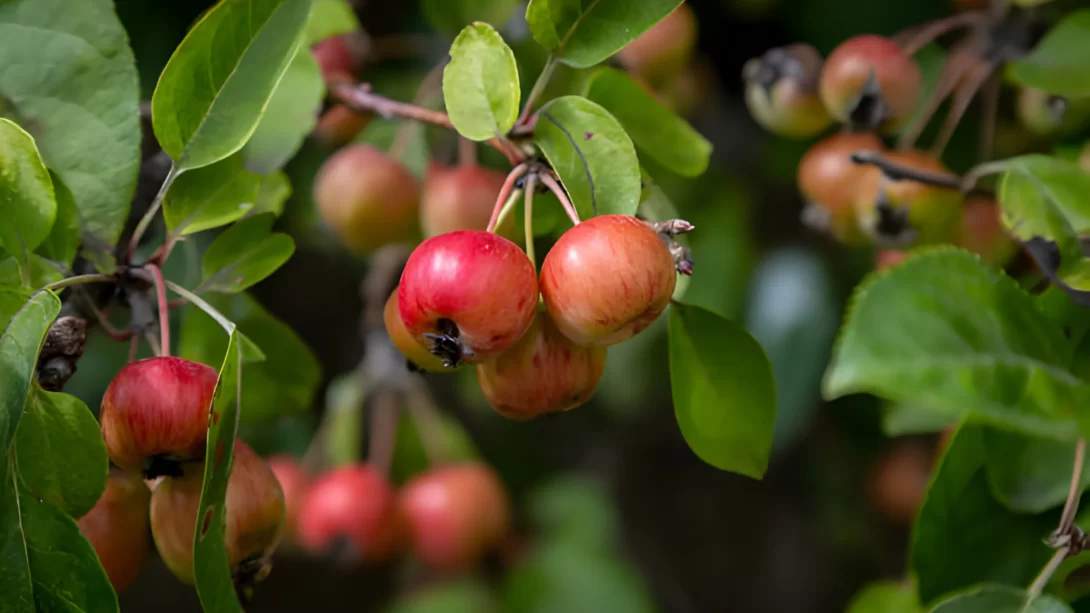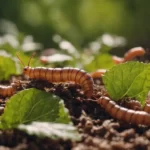Crab apples, with their vibrant blossoms and small, tart fruits, are a common sight in gardens and natural landscapes. While they add beauty to our surroundings, dog owners often wonder about the safety of these fruits when it comes to their pets. This article aims to shed light on whether crab apples are safe for dogs and what precautions should be taken to protect our furry friends.
What Are Crab Apples?
Crab apples are essentially the same species as regular apples, but they are from different cultivars. These trees produce small, tart fruits, often no bigger than a golf ball. The main difference between crab apples and regular apples lies in the size and taste of the fruit. Crab apples are known for their ornamental value, especially during spring when they bloom with attractive flowers.
There are various types of crab apple trees, each with distinct fruit characteristics. Some produce sweet fruit, while others are more bitter. The appeal of crab apples in landscaping is undeniable due to their hardiness and the visual appeal of their blossoms and fruit.
Potential Risks of Crab Apples to Dogs
While crab apples are not inherently toxic to dogs, certain parts of the tree and fruit can pose risks. The seeds, stems, and leaves of crab apples contain cyanogenic glycosides, which can release cyanide when chewed and digested. Ingesting these parts in large quantities can be harmful to dogs.
The level of toxicity often depends on whether the crab apples are ripe or unripe. Unripe fruits tend to be more harmful due to higher concentrations of these compounds. It’s also important to consider the size of the dog and the amount of crab apples ingested. Smaller dogs or those that consume large quantities of crab apples are at a higher risk of experiencing toxic effects.
Symptoms of Crab Apple Poisoning in Dogs
If a dog consumes parts of a crab apple tree, particularly the seeds, stems, or leaves, it’s crucial to be aware of the potential symptoms of poisoning. These can vary depending on the amount ingested and the size of the dog, but common signs include:
- Stomach upset, which may manifest as vomiting or diarrhea.
- Signs of abdominal pain, such as whining, restlessness, or a hunched posture.
- Difficulty breathing if cyanide poisoning occurs, which is a more serious but less common complication.
- General weakness or lethargy, potentially progressing to more severe symptoms like seizures or collapse in extreme cases.
The severity of these symptoms can range from mild to life-threatening, particularly if a large amount of crab apple material has been consumed.
First Aid and Treatment for Dogs Consuming Crab Apples
If you suspect your dog has eaten crab apples or parts of the crab apple tree, prompt action is necessary:
- Remove Remaining Plant Material: If there are still pieces of crab apple in your dog’s mouth, gently remove them to prevent further ingestion.
- Observe for Symptoms: Monitor your dog closely for any signs of distress or illness.
- Consult a Veterinarian: Even if your dog shows no immediate symptoms, it’s wise to contact a vet for advice, especially if a significant amount was eaten.
Veterinary treatment for crab apple ingestion may include:
- Inducing vomiting to remove any undigested material from the stomach, if recent ingestion occurred.
- Administration of activated charcoal to bind any remaining toxins in the gastrointestinal tract.
- Supportive care, such as IV fluids, to manage symptoms like vomiting and diarrhea and to support organ function.
- Monitoring and treatment for more severe symptoms, such as breathing difficulties or seizures.
Preventive Measures for Dog Owners
Prevention is key to avoiding the risks associated with crab apples for dogs. Dog owners should consider the following strategies:
- Safe Landscaping Choices: If you have a dog, choose non-toxic plants for your garden. If you already have crab apple trees, consider fencing them off or regularly cleaning up fallen fruit and debris.
- Training Your Dog: Teach your dog to avoid eating unknown plants and objects. Commands like “leave it” can be very effective in preventing ingestion of potentially harmful items.
- Supervision: Always supervise your dog when they are in areas where crab apples or other potentially toxic plants are present.
Conclusion
Crab apples, while not inherently toxic, can pose risks to dogs, particularly when they ingest significant amounts of the seeds, stems, or leaves. The key to preventing crab apple poisoning in dogs lies in awareness and proactive measures. Dog owners should be vigilant, especially during the fruiting season when fallen crab apples are more accessible to curious pets.
In summary, the risks associated with crab apples for dogs include:
- Potential cyanide poisoning from ingesting seeds, stems, and leaves.
- Gastrointestinal upset from eating the fruit, particularly in large quantities.
- The risk level varies based on the dog’s size and the amount of crab apple material ingested.
To ensure the safety of your dog, consider the following final recommendations:
- Regularly Inspect Your Garden: Keep an eye on crab apple trees, especially when the fruits are ripe. Clean up any fallen fruits and debris promptly.
- Limit Access: Fence off areas with crab apple trees or keep your dog leashed and supervised in these areas.
- Educate Yourself and Your Family: Ensure everyone in your household is aware of the potential risks and knows how to prevent your dog from ingesting these plants.
- Emergency Preparedness: Know the symptoms of crab apple poisoning and have your veterinarian’s contact information readily available.
While crab apples add beauty to our gardens, their potential impact on our pets cannot be ignored. By taking preventative measures and educating ourselves, we can enjoy these ornamental trees while keeping our furry friends safe and healthy. Responsible pet ownership involves balancing the enjoyment of our natural surroundings with the well-being of our canine companions. With the right precautions, you and your dog can safely coexist with crab apples in your environment.



